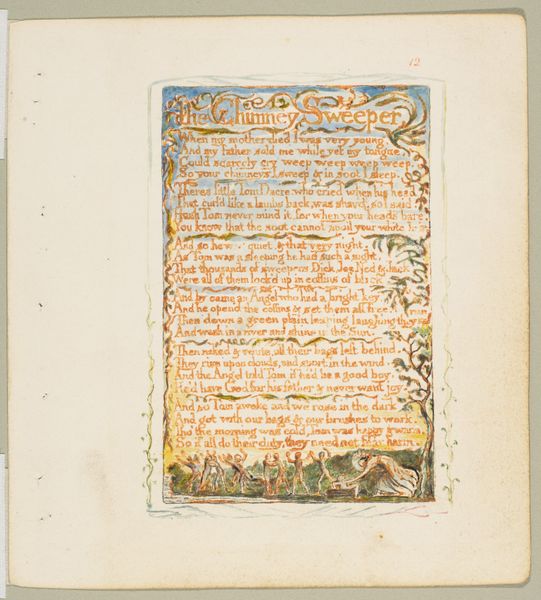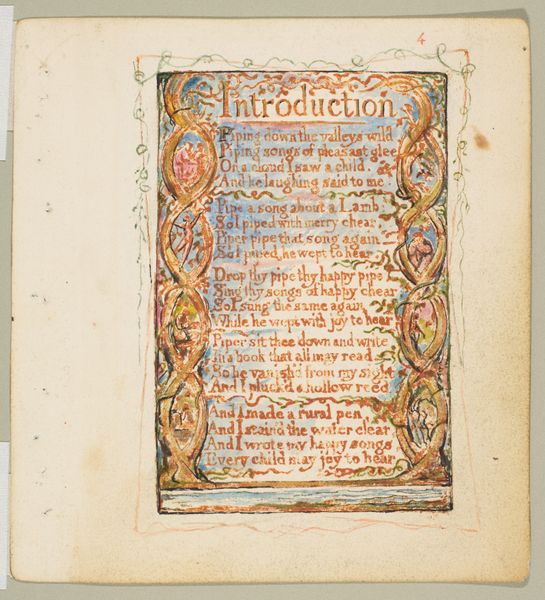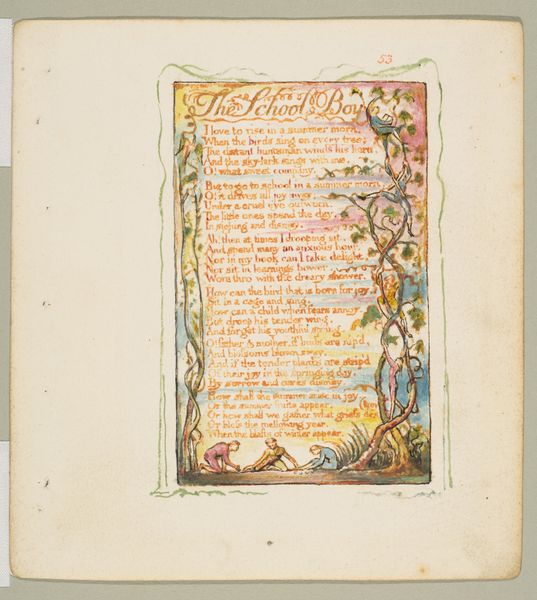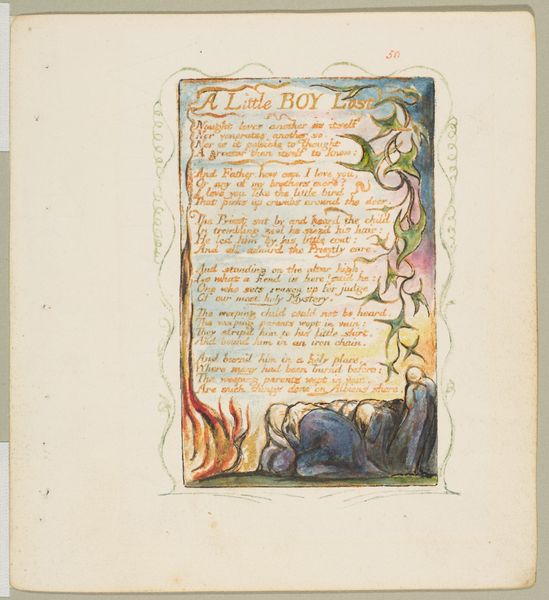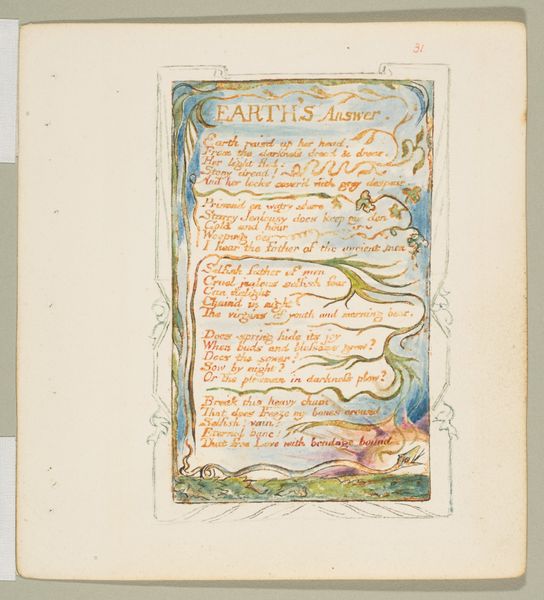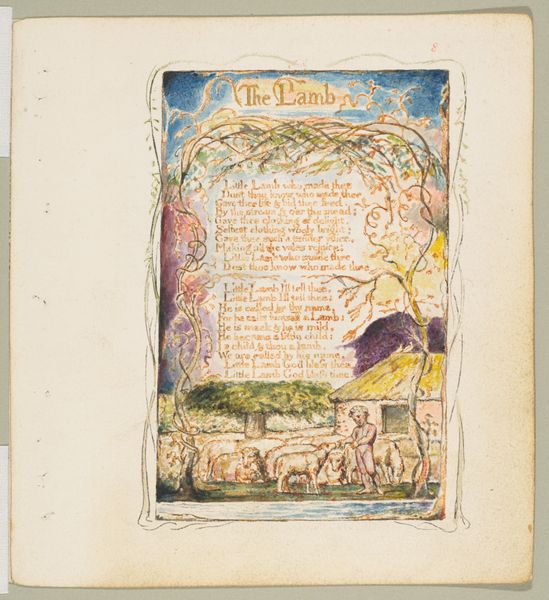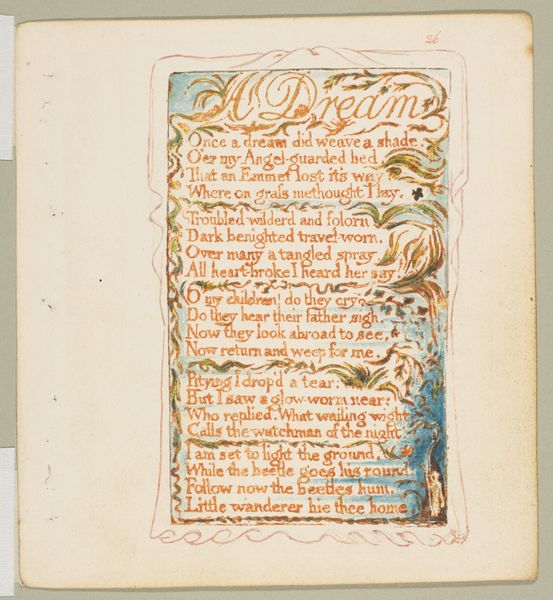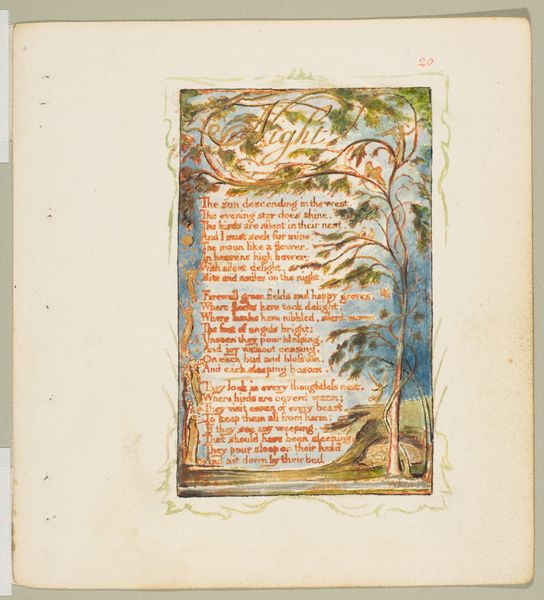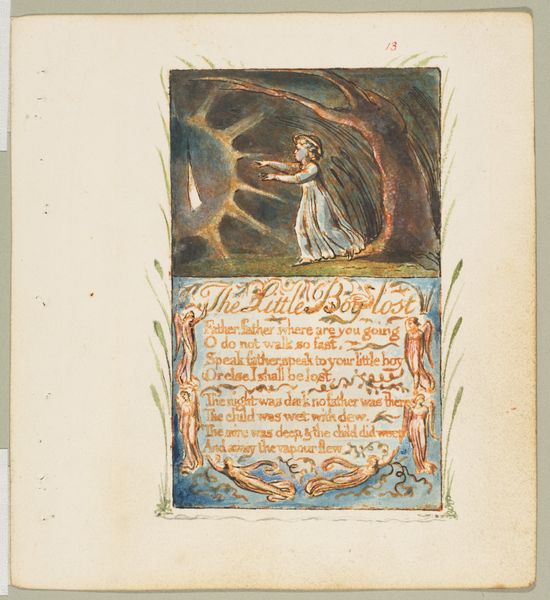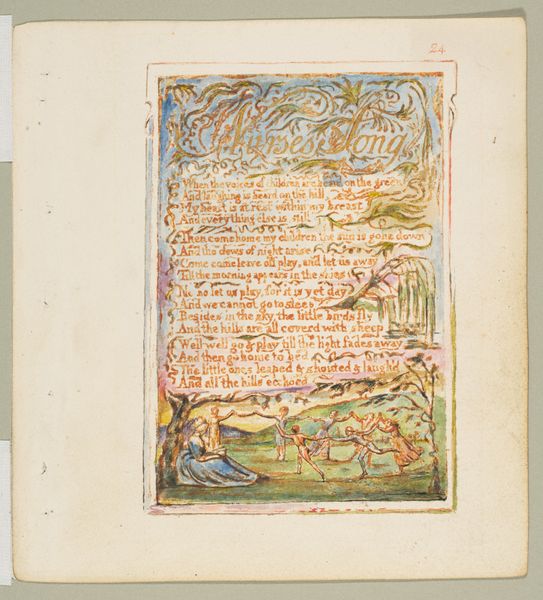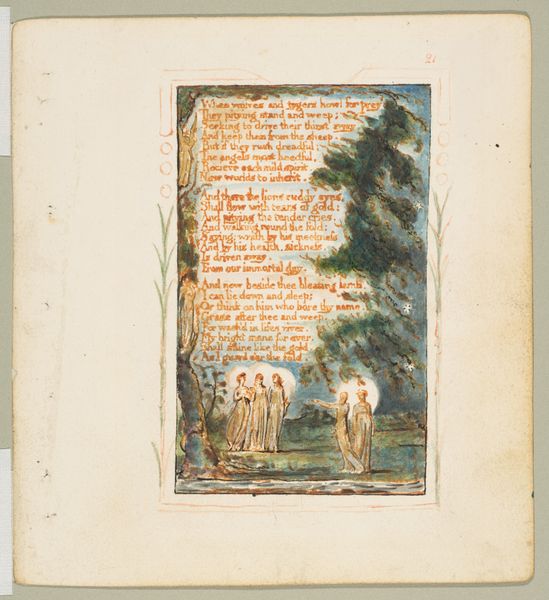
drawing, print, paper, watercolor
#
drawing
#
water colours
# print
#
paper
#
watercolor
#
coloured pencil
#
romanticism
#
watercolour illustration
Dimensions: sheet: 6 3/16 x 5 9/16 in. (15.7 x 14.1 cm)
Copyright: Public Domain
Editor: Here we have William Blake's "Songs of Innocence: A Cradle Song," created between 1789 and 1825. It combines printmaking and watercolor on paper and has a wonderfully ornate design surrounding the text. It feels almost like a page from an illuminated manuscript. What strikes you most about it? Curator: What immediately catches my eye is Blake's deliberate fusion of word and image. It's a political act, pushing back against the rigid separation of artistic disciplines favored by institutions of his time. Blake believed in art as a holistic, immersive experience, aiming to awaken the viewer's imagination. The fact he self-published also shows an intriguing negotiation between artist, publisher and audience. Editor: So the combination of image and text was a radical statement? Curator: Precisely! The imagery isn't merely decorative; it actively interprets and amplifies the poem’s meaning. Notice the sinuous, organic forms embracing the text. These are not just aesthetic flourishes, they’re visual metaphors for the all-encompassing love and protection described in the poem. The text itself is presented almost as emanating from God himself; the viewer feels they are engaging with holy words on a higher plane than they may have felt before. Editor: That’s a helpful point. It’s interesting to think of the illuminated text as an expression of personal and political independence. Did his choice of materials contribute to that message? Curator: Absolutely. His embrace of watercolor, combined with printmaking, allowed him a unique degree of control over the entire artistic process. It challenged the established hierarchy that favored oil painting as the "serious" art form. Blake, through his deliberate artistic choices, democratized art production. He proved that profound and revolutionary ideas could be conveyed through accessible means, bypassing established art structures and speaking directly to the people. Editor: I never considered the material choices in such a social and political light! I will never read Blake in the same way! Curator: The political message of art is sometimes subtle, and in others cases, it leaps out to grab the viewer by the face and demand to be heard! It is pieces such as these which force people to appreciate and respect art for its cultural significance.
Comments
No comments
Be the first to comment and join the conversation on the ultimate creative platform.

